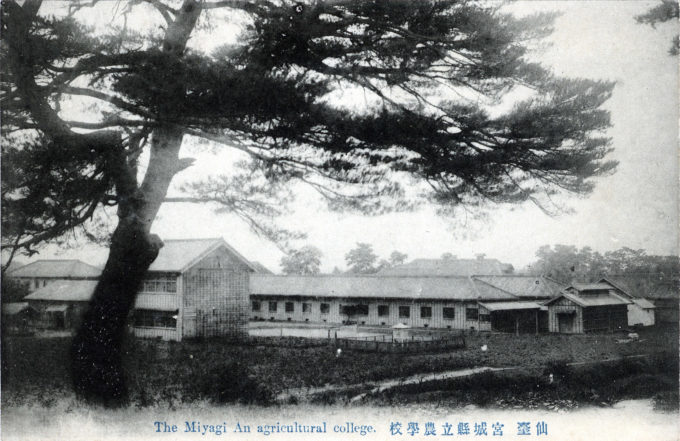
“The Miyagi, An Agricultural College”, Sendai, Miyagi Prefecture, c. 1910, had its origin in the education reforms begun early on by the Meiji government whose leaders believed education was the best investment for achieving rapid modernization. The first agricultural school and an experimental farm, both based on Western practices, were established in Tokyo in 1873.
See also:
“Stock farm of cows near Sapporo”, Hokkaido, c. 1920.
“Live Stock Exposition”, Ueno Park, Tokyo, 1919.
“Education in the Empire of Japan during the Meiji Restoration was a high priority for the government, as the leadership of the early Meiji government realized the need for universal public education in its drive to modernize Japan.
“During the Edo period, education that were given to the commoners and outcasts were limited to none. What these low-class people did learn was generally geared towards the basic and practical subjects such as reading, writing, and arithmetic … After 1868 new leadership set Japan on a rapid course of modernization. The Meiji leaders established a public education system to modernize the country.
“Missions like the Iwakura mission were sent abroad to study the education systems of leading Western countries. They returned with the ideas of decentralization, local school boards, and teacher autonomy. Such ideas and ambitious initial plans, however, proved very difficult to carry out. After some trial and error, a new national education system emerged … Imperial universities were intended to create westernized leaders who would be able to direct the modernization of Japan.
“In December, 1885, the cabinet system of government was established, and Mori Arinori became the first Minister of Education of Japan. Mori, together with Inoue Kowashi created the foundation of the Empire of Japan’s educational system by issuing a series of orders from 1886. These laws established an elementary school system, middle school system, normal school system and an imperial university system.
“With the aid of foreign advisors, such as American educators David Murray and Marion McCarrell Scott, normal schools for teacher education were also created in each prefecture. Other advisors, such as George Adams Leland, were recruited to create specific types of curriculum.”
– Wikiepdia

